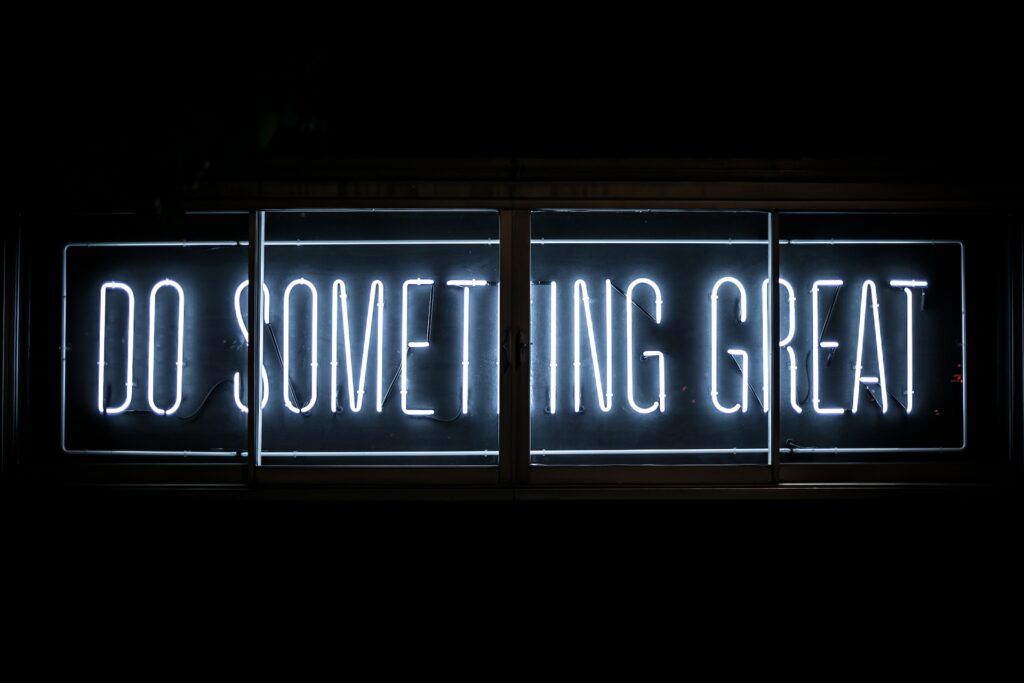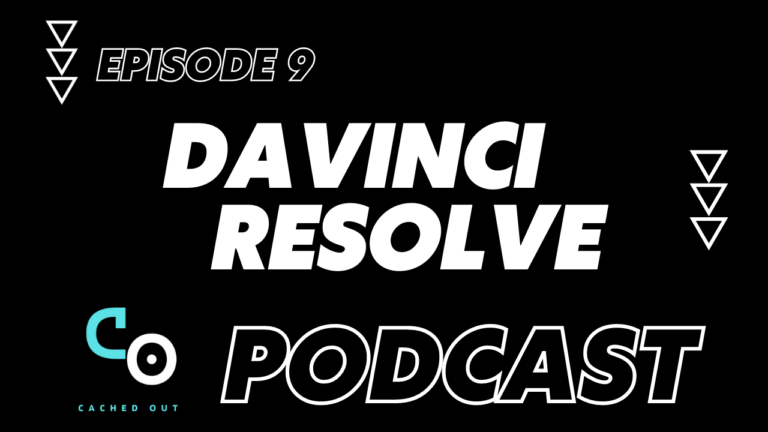Ever wondered about starting creative entrepreneurship? Are you a creative soul brimming with innovative ideas, artistic talents, and an entrepreneurial spirit? Have you ever dreamt of turning your creative passion into a thriving business? If so, you’ve embarked on an exciting journey into the world of creative entrepreneurship, and you’re in the right place.
Creative entrepreneurship is a dynamic and transformative field that celebrates the fusion of artistic expression with business acumen. It’s about harnessing your unique creative talents, whether in art, design, writing, music, or any other creative domain, and transforming them into profitable ventures that resonate with audiences and customers alike.
In this comprehensive guide, we’ll be your compass and companion as you navigate the path from the initial spark of a creative business idea to the exhilarating launch of your venture. Whether you’re an aspiring artist, a designer, or anyone with a creative passion, this guide is designed to equip you with the knowledge, strategies, and inspiration for starting creative entrepreneurship in your life!
The Power of Creative Business
Creative entrepreneurship isn’t just about business; it’s about the fusion of creativity and commerce, where innovation becomes your greatest asset. In a rapidly evolving global economy, creativity is the fuel that drives innovation and sets you apart from the crowd. It’s the spark that ignites new ideas, disrupts traditional industries, and paves the way for groundbreaking solutions.
Today, the creative economy is thriving like never before. With the rise of digital platforms, online marketplaces, and the growing demand for unique, personalized experiences, the opportunities for creative entrepreneurs are boundless. From crafting hand-made artisanal products to offering digital services that resonate with global audiences, creative entrepreneurs are reshaping industries and leaving their indelible mark on the world.
What This Guide Offers
This guide is more than a collection of advice and tips; it’s your roadmap to success! We’ve carefully curated each section to provide you with actionable insights, real-world examples, and expert guidance. Whether you’re starting from scratch or looking to refine an existing creative business, you’ll find valuable information here to propel your journey forward.
Finding Your Creative Business Idea
Starting creative entrepreneurship successfully, begins with a compelling idea—a concept that ignites your passion, aligns with your skills, and resonates with potential customers. Your journey toward creative entrepreneurship begins with finding that unique idea that sets you on a path to success. Here’s how to embark on the exciting process of idea generation:
Explore Your Passions and Interests
The first step in finding your creative business idea is to explore your passions and interests. Take a moment to reflect on what truly excites you. What creative activities do you find most enjoyable? It could be anything from painting, photography, writing, crafting, designing, or even a fusion of multiple interests. The key is to identify what genuinely motivates and energizes you.
Assess Your Skills and Expertise
Once you’ve identified your passions, assess your skills and expertise in those areas. What are you exceptionally good at? What unique skills or talents do you possess? Your creative business idea should leverage your strengths and showcase your abilities. Remember that your passion can drive you to acquire new skills as well.
Identify Market Gaps and Trends
While your creative business should be an expression of your passion and skills, it’s equally important to consider the market. Research current market gaps and trends within your chosen creative niche. Are there unmet needs or underserved audiences? Are there emerging trends that align with your interests and expertise? By aligning your idea with market demand, you increase your chances of success.
Brainstorm and Ideate
Set aside time for brainstorming and ideation sessions. Gather a notebook or use digital tools to jot down all your ideas, no matter how unconventional they may seem at first. Sometimes, the most innovative ideas emerge from unexpected connections between seemingly unrelated concepts. Don’t limit yourself during this creative process.

Seek Inspiration Everywhere
Inspiration can strike anywhere, so be open to new experiences and diverse sources of inspiration. Attend art exhibitions, read books, explore nature, travel, or engage with other creative individuals. Often, a change of scenery or a new perspective can trigger breakthrough ideas.
Validate Your Ideas
Once you have a list of potential creative business ideas, it’s time to validate them. Talk to friends, family, and peers about your concepts to gather feedback. Conduct surveys or polls to gauge public interest. Consider creating prototypes or samples to test the feasibility of your ideas in the real world.
Refine and Focus
After validation, you may find that some ideas are more promising than others. Refine and focus your efforts on the most viable concepts. Consider how each idea aligns with your long-term goals and values, as well as its potential for growth and sustainability.
Stay Open to Evolution
Remember that your creative business idea may evolve over time. It’s perfectly normal to refine your concept as you learn more about your target market and gather feedback. Be adaptable and open to change as you move forward.
Finding your creative business idea is an exciting and creative journey in itself. Embrace the process of exploration, ideation, and validation, and let your passion guide you. Once you’ve discovered the perfect idea, you’ll be well on your way to bringing your creative vision to life.
In the next section, we’ll delve into the critical aspect of market research and validation to ensure that your creative business idea has the potential to thrive.

Market Research and Validation
One of the fundamental pillars of launching a successful creative business is conducting thorough market research and validation. This crucial step ensures that your creative business idea not only aligns with your passions but also has the potential to meet the needs and desires of your target audience. Here’s how to navigate this important phase:
The Significance of Market Research
Market research forms the bedrock of your creative business’s foundation. It’s the process of gathering and analyzing information about your target market, competitors, and industry trends. By understanding your market, you can make informed decisions and tailor your creative offerings to meet specific demands.
Identifying Your Target Audience
Begin by identifying your target audience—the individuals or groups most likely to benefit from your creative products or services. Develop detailed customer personas that encompass demographics, psychographics, preferences, and pain points. This deep understanding will guide your business strategy.
Analyzing Competitors of your Creative Business
Study your competitors within your chosen niche. Investigate their strengths, weaknesses, product offerings, and marketing strategies. Identify gaps in the market where your creative business can excel or offer something unique. Competition isn’t a deterrent; it’s an opportunity to differentiate yourself!
Surveys and Interviews
Engage with your potential audience directly through surveys and interviews. These interactions provide invaluable insights into their needs and preferences. Ask open-ended questions that encourage participants to share their thoughts and suggestions.
Test Your Ideas
Consider creating prototypes or minimum viable products (MVPs) to test your creative offerings in the real world. This can involve offering a limited version of your product or service to a small group of early adopters. Their feedback can help you refine and improve your offerings.
Validate Demand
Your market research should aim to validate the demand for your creative products or services. Are people willing to pay for what you’re offering? Look for signs of interest, such as pre-orders, inquiries, or early sign-ups. The goal is to confirm that there’s a genuine desire for what you’re creating.
SWOT Analysis
Conduct a SWOT (Strengths, Weaknesses, Opportunities, Threats) analysis for your creative business idea. This structured assessment will help you identify internal strengths and weaknesses as well as external opportunities and threats. It’s a valuable tool for strategic planning of any business!
Refine Your Business Idea
Based on the insights gained through market research and validation, refine your creative business idea. Make adjustments to better align with the needs and desires of your target audience. Your goal is to create a product or service that not only fulfills a market need but also reflects your creative vision.
Market research and validation are critical steps that lay the foundation for a successful creative business. They provide you with the confidence that your creative endeavor is not only aligned with your passions but also poised for growth and sustainability in the competitive marketplace.
In the next section, we’ll delve into the process of branding and identity!

Branding and Identity
In the realm of creative entrepreneurship, your brand is your calling card—it’s how you communicate your unique identity, values, and offerings to the world. Effective branding is the cornerstone of a successful creative business. Here’s how to craft a compelling brand identity that resonates with your audience:
Understanding Branding
Branding is more than just a logo or a catchy slogan; it’s the holistic representation of your creative business. It encompasses your visual identity, messaging, values, and the overall experience you provide to your customers. Effective branding evokes emotions, fosters trust, and differentiates your business in a crowded marketplace.
Define Your Brand’s Personality
Start by defining the personality of your brand. Is it playful, sophisticated, bold, or whimsical? Consider the emotions and feelings you want your brand to evoke in your audience. Your brand’s personality should align with your creative vision and resonate with your target audience.
Craft a Unique Brand Name and Logo
Choose a brand name and design a logo that reflect your brand’s personality and values. Ensure that they are memorable, visually appealing, and align with your creative niche. Your brand name and logo will become the face of your business, so invest time and thought into their creation.
Develop a Brand Story
Storytelling is a powerful tool in branding. Craft a compelling brand story that narrates your journey, mission, and the essence of your creative business. Share the story of what inspired you to start your venture and the impact you aim to make in the world. Don’t let this aspect of your brand slip!
People remember stories more than facts. A brand story that connects with the heart of what matters to your customers, will help you find your tribe quickly!
Effective branding isn’t a one-time effort; it’s an ongoing commitment to creating a cohesive and memorable identity for your creative business. When done right, your brand becomes a powerful tool for attracting and retaining loyal customers, setting you apart in the competitive landscape of creative entrepreneurship.
In the next section, we’ll explore the importance of building an online presence for your creative business and how it can help you reach a wider audience.

Building Your Online Presence
In today’s digital age, establishing a robust online presence is paramount for creative entrepreneurs. Your online presence serves as the window to your creative world, allowing you to showcase your work, engage with your audience, and grow your business. Here’s how to strategically build and enhance your online presence:
Create a Professional Website
Your website is the centerpiece of your online presence. Ensure it’s well-designed, user-friendly, and reflects your brand identity. Include an engaging homepage, an about page that shares your story, a portfolio or product showcase, and clear contact information.
A key factor to remember for your website, is incorporating your brand story into your entire site. Your website is typically the first place people discover your brand. Make sure that their first experience with your brand, communicates the story and impact your company is making!
Content Creation and Blogging
Regularly create high-quality content that resonates with your target audience. Share your insights, creative process, and industry knowledge through blog posts, articles, or videos. Consistent content creation demonstrates your expertise and attracts organic traffic.
Take some time and create a content creation strategy to help you stay consistent with your content. Having a set content schedule will help you maintain the pace necessary to become an authority in your creative field!
Utilize Social Media Platforms
Identify the social media platforms that align with your creative niche and target audience. Maintain an active presence on these platforms to engage with your audience, share your work, and build a community. Use visuals, storytelling, and hashtags strategically to boost your reach on the platforms.
Your online presence is a dynamic and evolving aspect of your creative entrepreneurship journey. It’s not about being everywhere; it’s about being where your audience is and providing value. By strategically building and nurturing your online presence, you’ll create a digital ecosystem that supports your creative business’s growth and success.
In the next section, we’ll dive into the challenges and pitfalls of starting creative entrepreneurship!
Challenges and Pitfalls
Embarking on a creative entrepreneurship journey is undoubtedly rewarding, but it’s not without its share of challenges and potential pitfalls. Understanding and proactively addressing these challenges can better prepare you for success. Here’s a closer look at the common challenges creative entrepreneurs may encounter and how to navigate them:
Financial Challenges
Starting and growing a creative business often requires financial investment. Managing budgets, cash flow, and securing funding can be challenging. It’s essential to create a robust financial plan and consider alternative financing options such as loans, grants, or crowdfunding. Launching a creative business typically requires an initial investment in equipment, supplies, software, or studio space. This upfront cost can be a significant barrier, especially for those with limited personal savings.
Time Management
Time management stands as an essential pillar for creative entrepreneurs! At its core, effective time management is the art of balancing the demands of creative expression, business operations, and personal well-being. For creative entrepreneurs, every moment counts, and how you allocate your time can be the decisive factor between stagnation and success.
The efficient allocation of time enables creative entrepreneurs to operate at their most productive capacity, allowing them to accomplish more in less time. This heightened productivity translates to increased output, whether in the form of more creations, better client service, or more effective marketing efforts. Ultimately, efficient time management equips creative entrepreneurs with the ability to seize opportunities, meet deadlines, and consistently deliver their best work.
Self-Doubt and Burnout
A sneaky trap for creative entrepreneurs often comes in the form of self-doubt and burnout. The pressure to continually produce, innovate, and market can take a major toll on you! In order to stay resilient and thrive in the creative world, it’s essential to recognize and address these challenges head-on!
Self-doubt is a formidable adversary that can creep into the minds of even the most talented entrepreneurs. It often manifests as questioning one’s abilities, feeling inadequate, or fearing that your work isn’t good enough. This insidious companion can hinder your creativity and productivity, making it difficult to take risks or push the boundaries of your craft. Over time, persistent self-doubt can erode your confidence and lead to creative paralysis.
Burnout, on the other hand, is the result of prolonged and unrelenting stress. The creative process can be emotionally and mentally taxing, and when combined with the demands of running a business, it can be overwhelming. Burnout can manifest as physical and emotional exhaustion, decreased motivation, and even a loss of passion for your craft. It’s a state where you may feel like you’re running on empty, and the spark that once ignited your creativity seems to have dimmed.
To combat these challenges, start by acknowledging that self-doubt and burnout are common experiences for many creative entrepreneurs. Take time for self-reflection to identify the triggers and underlying causes of these feelings. Are there specific situations or patterns that exacerbate self-doubt or contribute to burnout?
Don’t hesitate to lean on your support network. Connect with fellow creatives, mentors, or friends who can provide guidance, encouragement, and a listening ear. Sharing your experiences with others who understand the creative journey can be immensely reassuring.
Another key thing to help you fight these challenges, is to recognize that it’s impossible to maintain peak creativity and productivity indefinitely. Set realistic expectations for yourself, your workload, and your creative output. Understand that creative ebbs and flows are entirely normal and learn to be kind to yourself! Acknowledge that making mistakes and facing challenges are part of the creative process. Treat yourself with the same compassion and understanding that you would offer to a close friend.
Acknowledging these challenges and pitfalls is the first step in overcoming them. Creative entrepreneurship is a journey that requires persistence, adaptability, and a growth mindset. By proactively addressing these challenges, seeking support when needed, and continuously learning and evolving, you can navigate the path to creative business success with confidence.
In the next section, we’ll conclude our ultimate guide to creative entrepreneurship by summarizing key takeaways and encouraging you to take action on your creative business journey.
In the world of creative entrepreneurship, taking action and staying motivated are the twin engines that drive your journey towards success. While the creative process can be exhilarating, it can also be filled with uncertainties and challenges. Cultivating motivation and actively translating it into action is crucial!
Use the tips and suggestions from this guide to help you better navigate the waters of starting creative entrepreneurship! Take action on the recommendations provided and find the thing that’ll keep you motivated when the going gets tough!
My Year With the Lumix S5II: A Comprehensive Review
After a brief hiatus, I’m thrilled to dive back into creating content with a special focus on my experience with the Lumix S5II. This remarkable journey, spanning over a year, has been a blend of learning, adaptation, and exploration. As the owner of two Lumix S5II units, serving as my A and B cameras for…
Continue Reading My Year With the Lumix S5II: A Comprehensive Review
Make Money with Videos | Simple Ways to Cash In!
Let’s face it, everyone wants to be able to make money with videos. Unfortunately, doing what we love may not always be very profitable. If you’re a videographer and you want some creative ideas to turn your passion for video into profits, this post is for you! Let’s take a look at some simple methods…
Continue Reading Make Money with Videos | Simple Ways to Cash In!
SORA Ai Video Generator – IS VIDEOGRAPHY DEAD?
Does Sora from OpenAi signal the end of videography as we know it? Not necessarily, but it does change a lot about the creative video world. So what is Sora? Sora is an AI model that can create realistic and imaginative scenes from text instructions. OpenAi is teaching Ai how to understand and simulate the…
Continue Reading SORA Ai Video Generator – IS VIDEOGRAPHY DEAD?
Photography Business Tools You Need! Book, Shoot, Deliver!
Running a photography business is an absolutely exciting adventure! There’s no greater feeling than turning your passion and hobby into a profitable career. Over the past 5 years I’ve had the blessing of being a professional photographer. Through those years, there have been some very useful tools that I’ve come across to help me in…
Continue Reading Photography Business Tools You Need! Book, Shoot, Deliver!
Is Davinci Resolve Studio Worth It!? YES, Here’s Why!
Davinci Resolve Studio is easily the best $300 investment that I’ve ever made in my business. When it comes to video production, it’s hard to find another suite that will provide you the same value that Davinci Resolve Studio provides! I started my editing career on Adobe Premier Pro, but I quickly came to dislike…
Continue Reading Is Davinci Resolve Studio Worth It!? YES, Here’s Why!
MOVEit Data Breach Impacted Companies
The recent MOVEit data breach has impacted a lot of heavy hitting companies. With a rise in data attacks over the past few years, it’s important to stay up to date on the latest breaches. For those who are unfamiliar, MOVEit is a managed file transfer product. It provides secure collaboration and automated file transfers…







